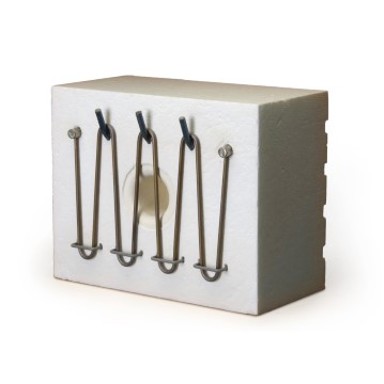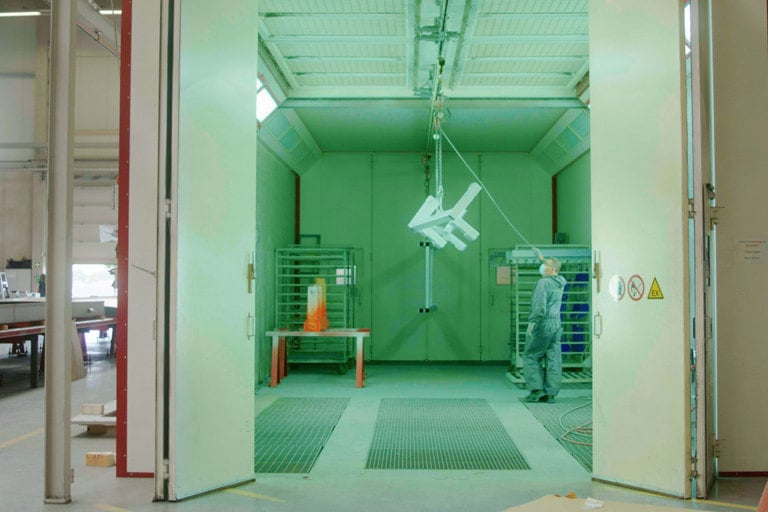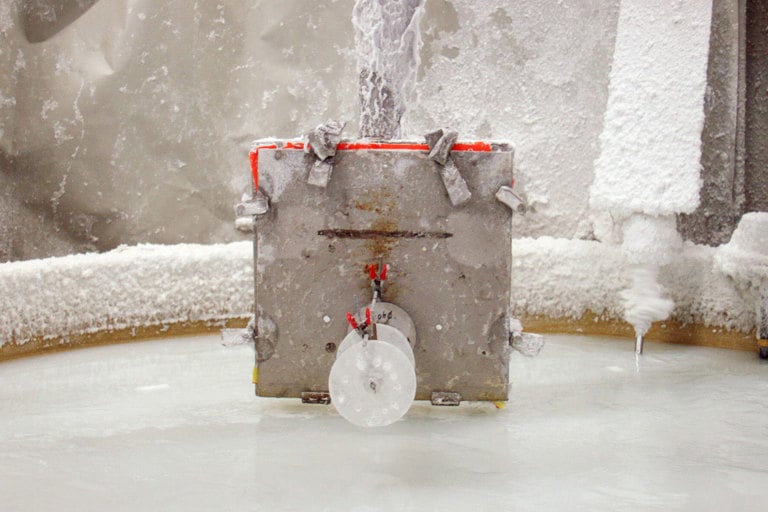 Sachin Pimpalnerkar, Global Product Manager, KanthalIn a new electrically heated spodumene calcination kiln, you put cold products into the chamber at one end and you remove hot products at the other end. In comparison, the volume of fuel and air entering and leaving a gas-fired kiln not only dwarfs the product volume, it also whisks away with it most of the energy used.
Sachin Pimpalnerkar, Global Product Manager, KanthalIn a new electrically heated spodumene calcination kiln, you put cold products into the chamber at one end and you remove hot products at the other end. In comparison, the volume of fuel and air entering and leaving a gas-fired kiln not only dwarfs the product volume, it also whisks away with it most of the energy used.
To visualize the sheer volumes involved, Kanthal Global Product Manager Sachin Pimpalnerkar got out his pencil and calculated the energy loss.
“This piece of math I had to do myself,” he jokes, showing a back of an envelope more than filled with calculations. “It’s a little quick and dirty. In a 24-hour period, for a 1 MW furnace, you’re talking about 2,568 Nm3 of gas and 27,760 Nm3 of air,” he says.
Huge gap in thermal efficiency
To get a picture of this, imagine that a typical hot air balloon is 16 meters across and 25 meters high, and contains a volume of about 2,000 cubic meters. For it to gracefully ascend, air is heated to around 100 degrees Celsius using about 130 liters of propane in an hour.
Before it is filtered and desulfurized, the temperature of flue gas from a rotary kiln is around 400 degrees Celsius.
Allowing for the much higher temperature, you could launch perhaps 30 balloons a day, or 11,000 balloons a year, using the flue gas of a 1 MW unit.
Despite all the efficiency gains of decades of commercial installations, a gas-fired kiln will achieve perhaps 25 percent thermal efficiency, rising to around 60 percent with state-of-the-art heat recovery employed
“The serious point is that it’s this sheer volume of hot gas that means that despite all the efficiency gains of decades of commercial installations, a gas-fired kiln will achieve perhaps 25 percent thermal efficiency, rising to around 60 percent with state-of-the-art heat recovery employed,” Pimpalnerkar says.
A typical plant might be around 4MW, or four times the size of our thought experiment. That means it’s literally pumping out as much as 15.26 MWh of energy as its flue gas emissions each day, Pimpalnerkar says.
These figures are only approximations, but they do start to give the scale of the thermal inefficiency of existing technology. By comparison, electrically heated kilns achieve close to 95 percent thermal efficiency.
Energy savings aren’t the only gain for the plant operator. A better working environment, with reduced noise and without harmful NOx emissions is another plus. And those NOx emissions that make a workplace unhealthy, can also raise regulators’ eyebrows. Permitting regimes are getting tougher as many cities and regions fail to hit their NOx reduction targets. Add to this, the simplicity and control of temperature. We’re used to electric heating being something you simply dial in. That process is less precise and much more elaborate when such large volumes of gas and air have to be piped, distributed and ignited.
Incentives to go electric
Consumers and original equipment manufacturers have for some time been demanding an energy-efficient and fossil-fuel-free supply chain for their climate-friendlier electric cars and other battery-powered applications.
Forward integration, where refiners seek to capture more of the available final product margins at or close to the upstream operations, adds a further incentive for operators to go electric, Pimpalnerkar says.
Firstly, when operators of a new mine in Scandinavia, England, the US, Canada or Australia decide to forward-integrate the calcination stage, they can avoid thousands of tons of concentrates traveling to China for final processing, he says.
When these energy-intensive parts of the production process are onshored in this way, it also means that the resulting industrial energy use is pulled into jurisdictions where there are incentives to avoid carbon emissions.
“An integrated operation can take advantage of emissions trading systems to offset energy costs,” Pimpalnerkar says.
And with regions such as Europe proposing a so-called Carbon Border Adjustment Mechanism on products imported from outside of their emissions trading system, forward integration could in future also safeguard the supply chain from such carbon tariffs.
Benefits from replacing gas with electric heating
- Environmental performance. Electric heating does not contaminate the working environment with CO2, NOx, CO, SOx or noise pollution, regardless of the energy source. Meanwhile, when powered by renewable energy, the entire process also releases zero emissions into the environment.
- Thermal efficiency. Electric heating offers significant efficiency benefits compared with gas heating.
- Cost efficiency. Vastly improved thermal efficiency translates directly to enhanced cost efficiency, as less energy is used.
- Production efficiency. Since electric heating is a more controlled heating process, the temperatures and heating zones can be fine-tuned, leading to improved quality.
- Installation and maintenance. Electric heating is easier to install. All you need is electricity, which all facilities have, even those that may not always have access to gas.
Kanthal as a partner in electrifying your kiln
- Reliability – Kanthal has a 90-year history in converting gas-heated furnaces to electrically heated ones
- Kanthal provides an extensive level of technical support
- Strong global presence – a speaking partner in your chosen region
- Deep expertise in electrode active material
Connected products
Here you can find the Kanthal product offering
Learn from our experts
Our latest articles



